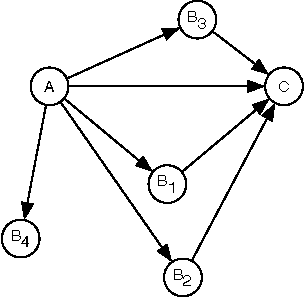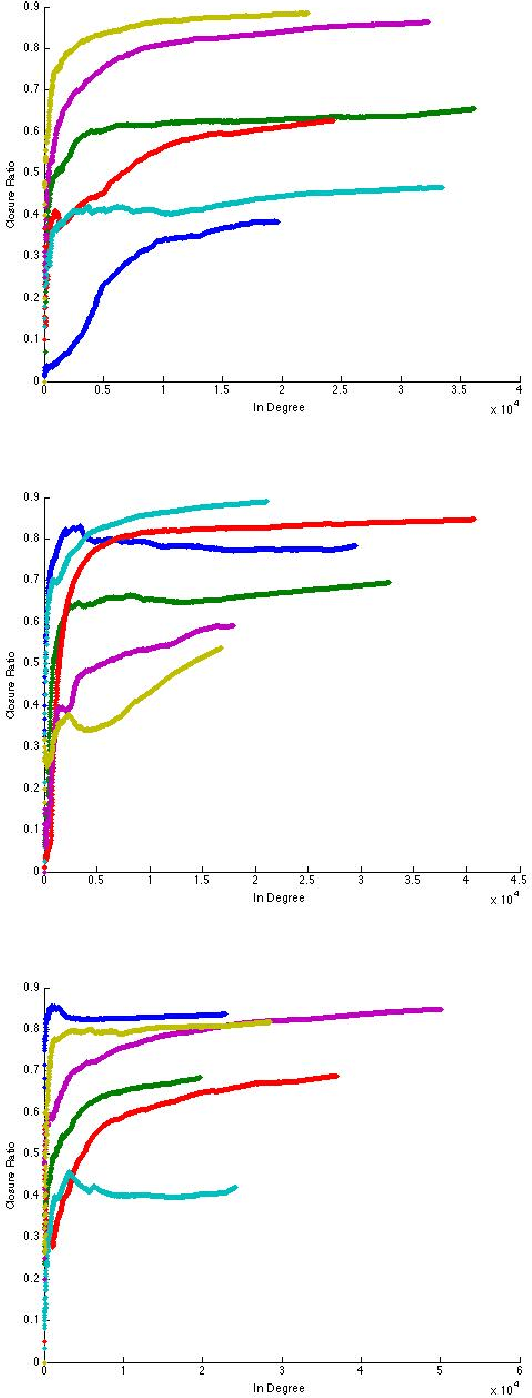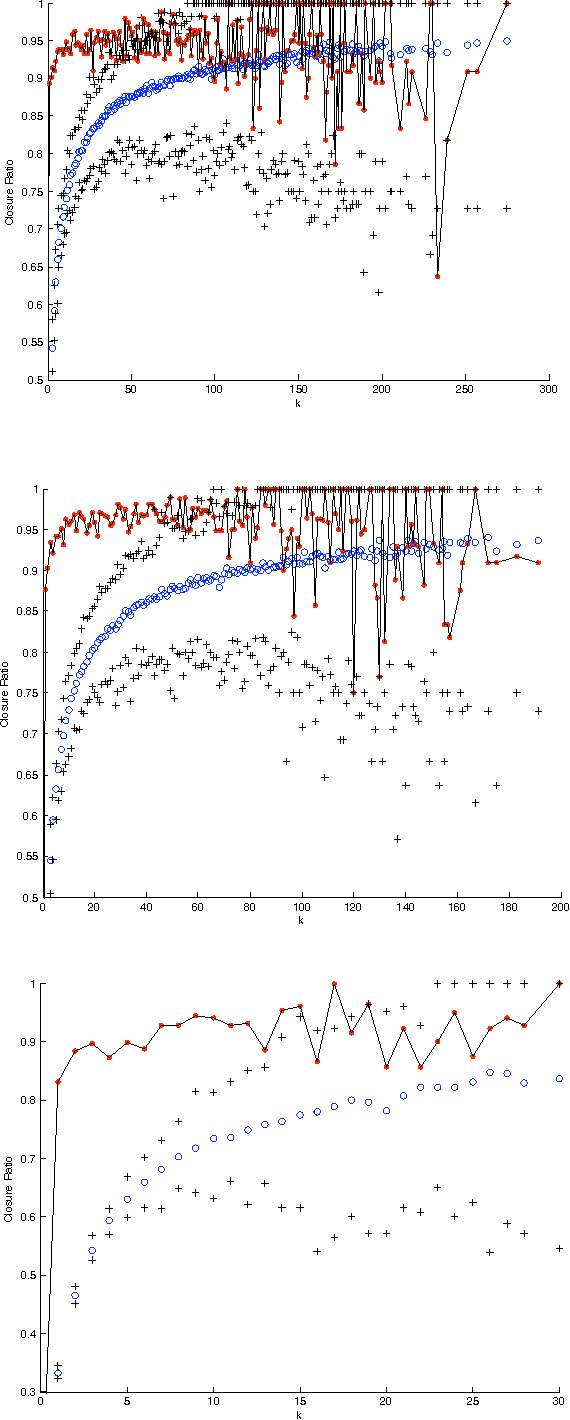The Directed Closure Process in Hybrid Social-Information Networks, with an Analysis of Link Formation on Twitter
Paper and Code
Mar 12, 2010



It has often been taken as a working assumption that directed links in information networks are frequently formed by "short-cutting" a two-step path between the source and the destination -- a kind of implicit "link copying" analogous to the process of triadic closure in social networks. Despite the role of this assumption in theoretical models such as preferential attachment, it has received very little direct empirical investigation. Here we develop a formalization and methodology for studying this type of directed closure process, and we provide evidence for its important role in the formation of links on Twitter. We then analyze a sequence of models designed to capture the structural phenomena related to directed closure that we observe in the Twitter data.
 Add to Chrome
Add to Chrome Add to Firefox
Add to Firefox Add to Edge
Add to Edge